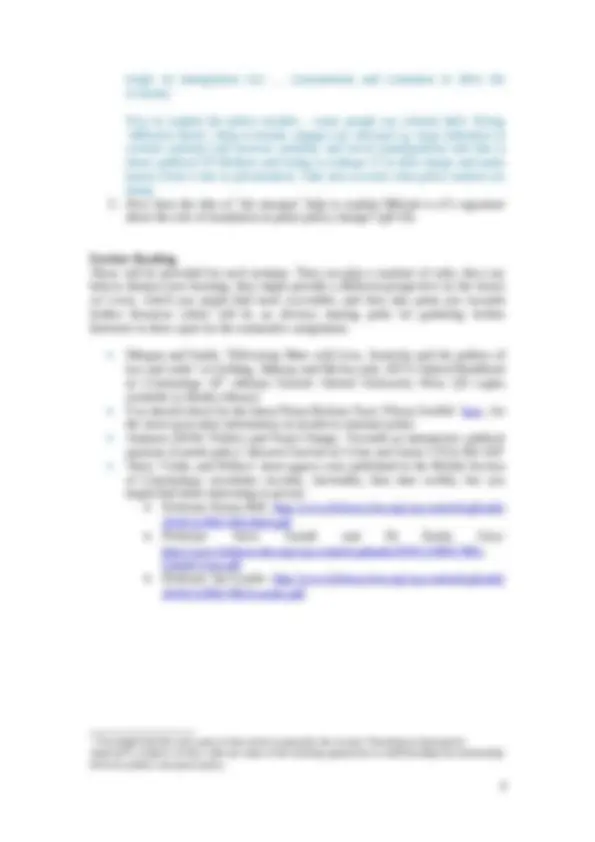




Study with the several resources on Docsity

Earn points by helping other students or get them with a premium plan


Prepare for your exams
Study with the several resources on Docsity

Earn points to download
Earn points by helping other students or get them with a premium plan
Community
Ask the community for help and clear up your study doubts
Discover the best universities in your country according to Docsity users
Free resources
Download our free guides on studying techniques, anxiety management strategies, and thesis advice from Docsity tutors
Introduction on penal policy and useful materials to consider
Typology: Exercises
Uploaded on 06/03/2020
3 documents
1 / 4

This page cannot be seen from the preview
Don't miss anything!



Seminar 1: Contemporary Penal Policy Essential Reading Newburn (2017) ‘The Politics of Crime and Its Control’, in Criminology (3rd edition) Abingdon: Routledge [available as e-book and multiple copies available in library] Newburn and Sparks (2004) ‘Criminal Justice and Political Cultures’ in Criminal Justice and Political Cultures Abingdon: Routledge [available as e- book and multiple copies available in library] Melossi, Sozzo and Sparks (2011) ‘Introduction: Criminal questions, cultural embeddedness and diffusion’ in Travels of the Criminal Question Oxford: Hart [pdf available on Blackboard in ‘Seminar 1’ folder]^1 Prompts Prompts will be provided for each seminar to guide your reading and will be provided, in some form, for each class. See also the ‘Guidance on Reading’ provided on Blackboard, which will help you to engage with the kinds of texts that we will encounter in this module. Because it is the first week, the prompts here are a little more detailed than usual. Introduction: aims in the module Political and social dynamics that influence criminal justice policy Focus mainly on ENG and WAL but will look at other jurisdictions How societies are and should be structured / The effects of crime/non-crime policies on crime and the appropriateness of how we respond to crime Over 10 years (Austerity) crime hasn’t really gone up, education, housing, welfare all play a part in this Brief definitions: Penal – relating to ‘the punishment of offenders under the legal system’ Policy: legislation, rules, actual practice Politics: ideologies and traditions *When discussing penal policy, we are discussing the state imposing pain on people – and how they legally do this (not saying that this is necessarily wrong) Christie,1994 – criminal justice as ‘pain infliction’ (The delivery of pain, to whom and for what contains an endless line of deep moral questions’) Newburn (2017) Useful introduction to the role that crime has played in UK-US politics over the past 50 years or so; and the way in which penal policy and politics interact. Problematic?
Crime rate: no consistent link between the prison (prison reform trust fact file) population and levels of crime according to the National Audit Office and international comparison shows there is no consistent link between two:
tough on immigration etc) … consumerism and customers to drive the economy Way to explain the policy transfer – some people say cultural shift. Strong ‘diffusion thesis’; deep economic changes are relevant e.g. large industries in western national and increase mobility and travel (immigration) and this is about political US thinkers and trying to reshape CJ in their image and make money from it due to privatisation. Take into account what policy makers are doing